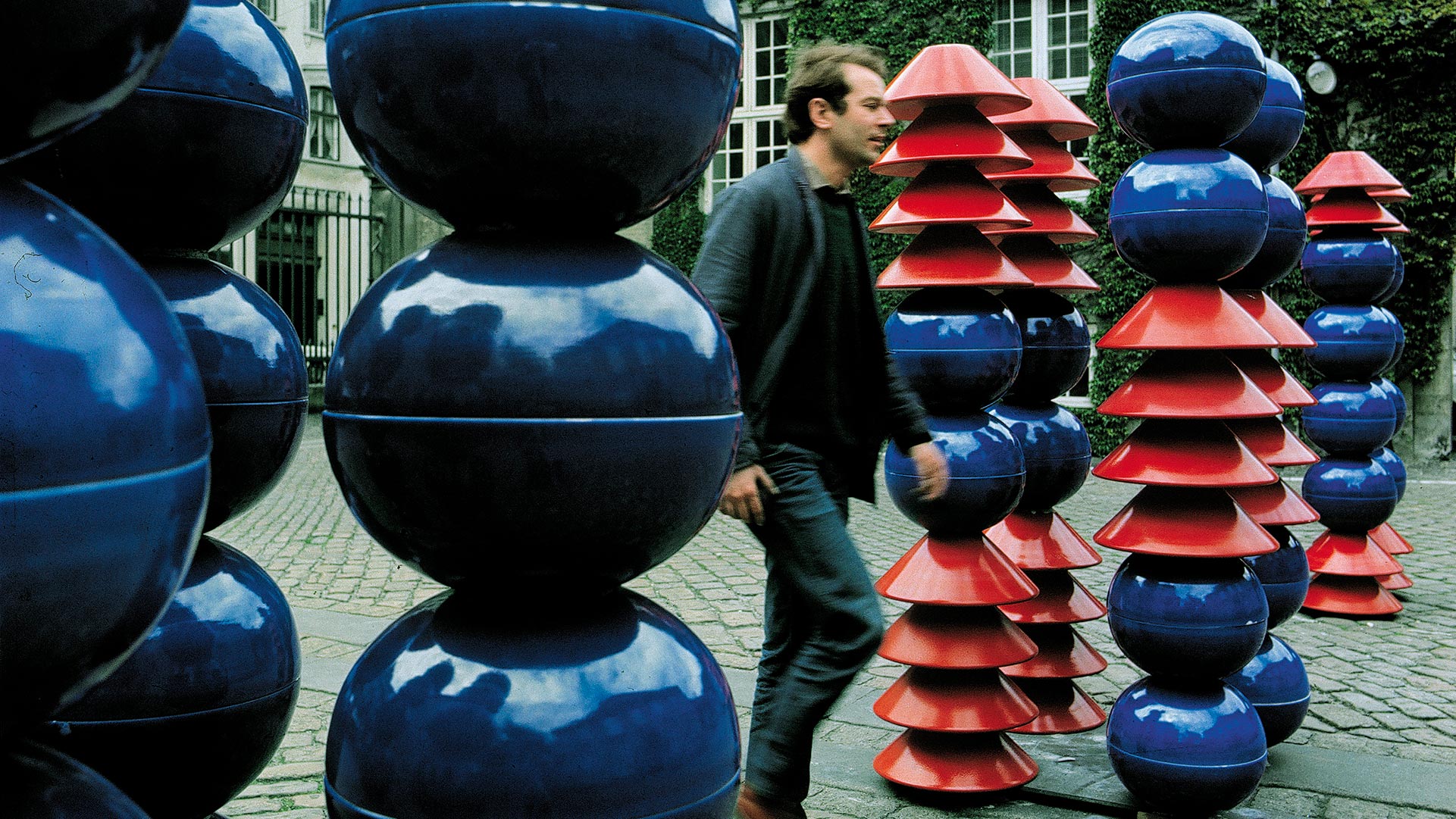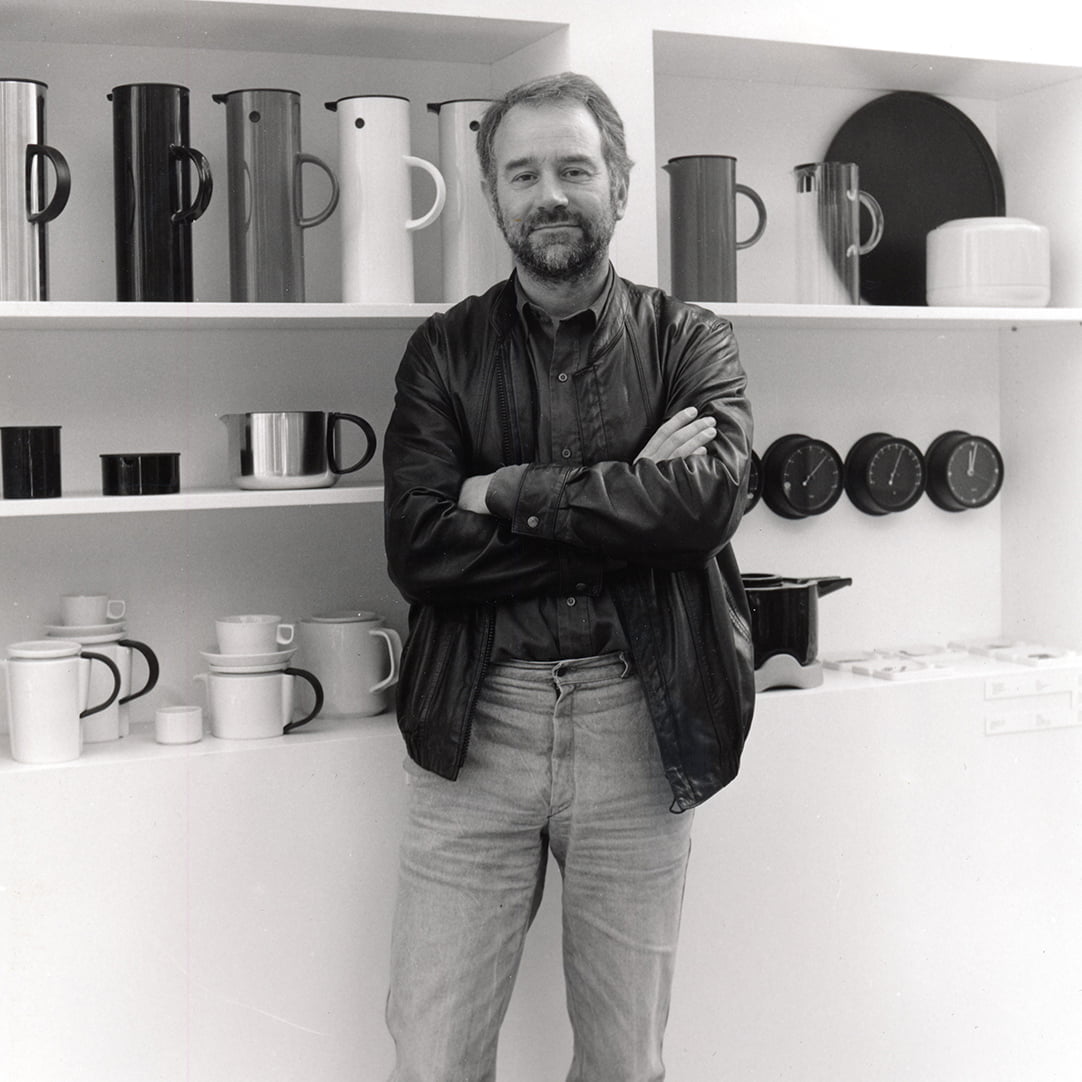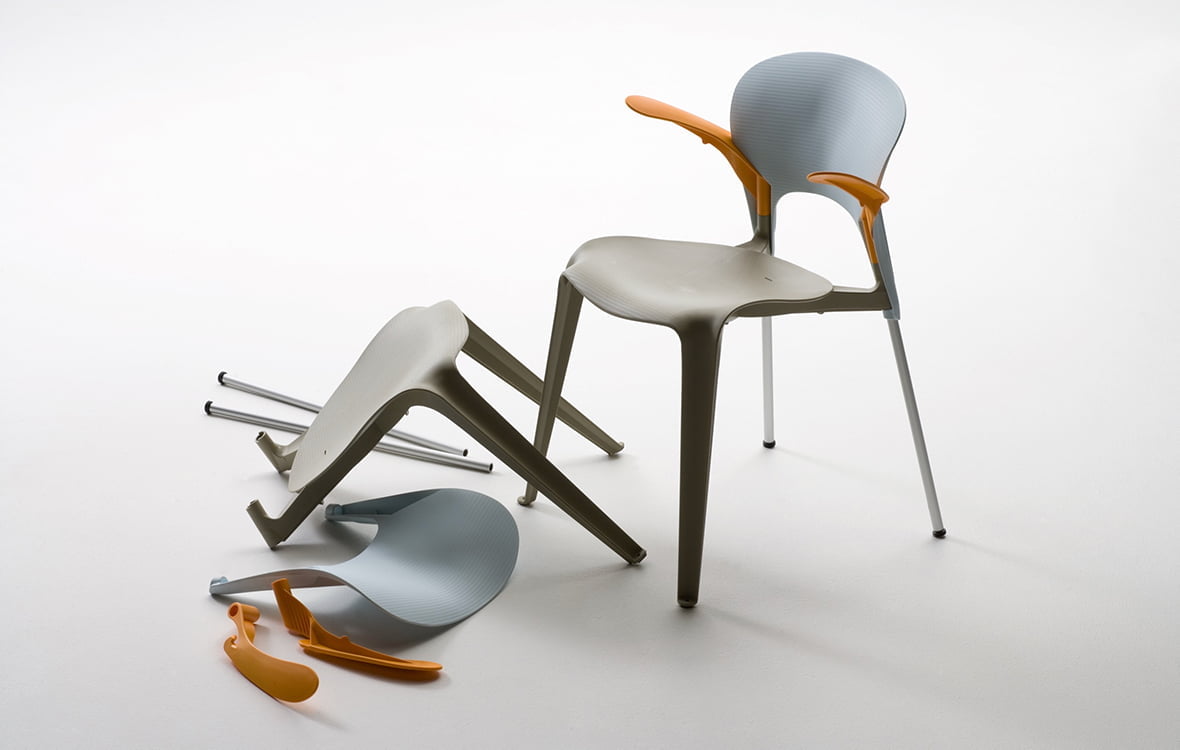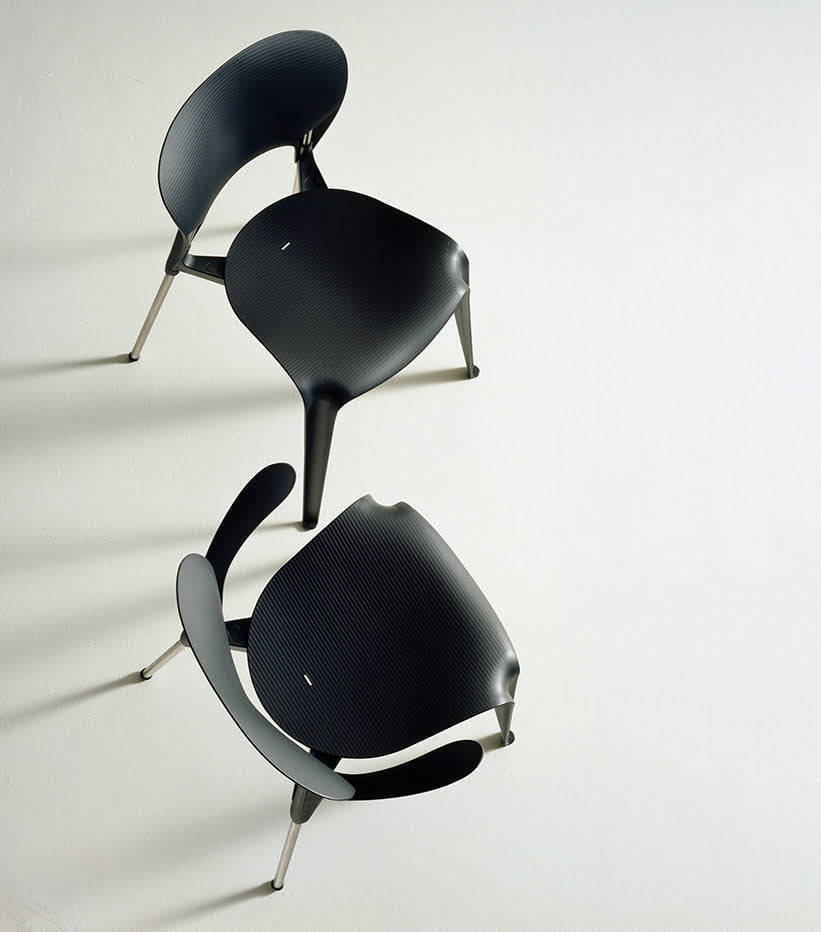
About Erik Magnussen

Erik Magnussen (1940-2014) was trained as a ceramist at the School of Applied Arts and Design in Copenhagen.
Among friends he was called ‘The Potter’. He always introduced himself as a ceramist rather than a designer. Whatever material he chose to work with he would refer to ceramic method.
A visionary headmaster at the Bernadotte School saw the young boy’s talent, giving him almost unlimited access to the ceramic workshop - even during math classes.
Erik Magnussen’s grandfather was a well known art dealer and a close friend of leading artists in Copenhagen.
His father was a gifted engineer involved with the heat treatment of steel and with test driving English motorcycles.
As a young artist Erik created large sculptures in both iron and clay, testing the limits of the materials. His interest in technical solutions, and his early contact with industry, designing for the Bing & Grøndahl Porcelain Factory in his early twenties, led him in the direction of industrial design.


His focus on simple, technical solutions that led him to several designs with a considerable element of invention. At Bing & Grøndahl he invented a teapot which was cast in only a single mold, producing a finished product. Later, the Stelton thermo jug, with a simple gimbal lid, allowing one hand operation.
Several versions of tube steel chairs and tables came from his interest in making it simple, minimizing the amount of elements used, as well as facilitating efficient production and mounting.
There was a strong social element to Erik’s efforts. He wanted to use highly creative and technical, industrial solutions, to bring good quality, from sound and sensible craftsmanship, into everyday products that most people could afford.
He was also interested in the employees throughout the production process, spending hours of time listening to their concerns and learning much from their experience. In turn they appreciated him, for making their jobs less complicated.
The aesthetics impetus, was in Erik Magnussen’s hands. All of his ideas were modeled before drawn. He knew that the body, is as able to understand and communicate, as the mind.
His eagerness in using all of his senses led his interest in people from any profession who did the same… more than in networking in the design community.
He claimed that he could see in any design, if the designer was interested in music. He listened to jazz, day and night.
The way a design communicates with the user was one of his main concerns. He loved to encounter a good design and imagine the creator’s way of thinking… as much as he loved to observe 15,000-year-old cave paintings in southern France, feeling a very close connection with the artist.
"He claimed that he could see in any design, if the designer was interested in music"
Awards


